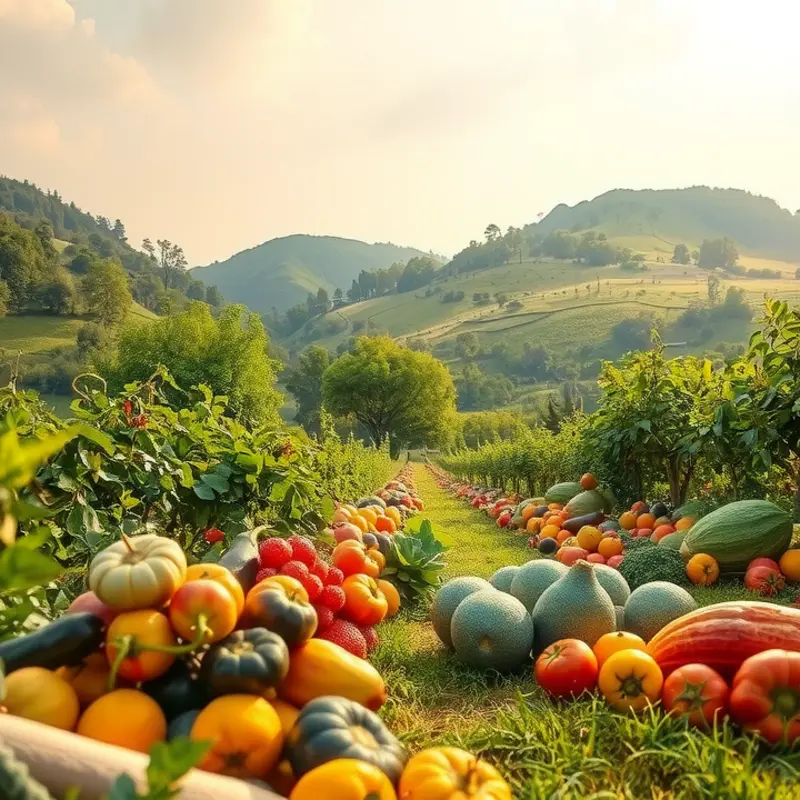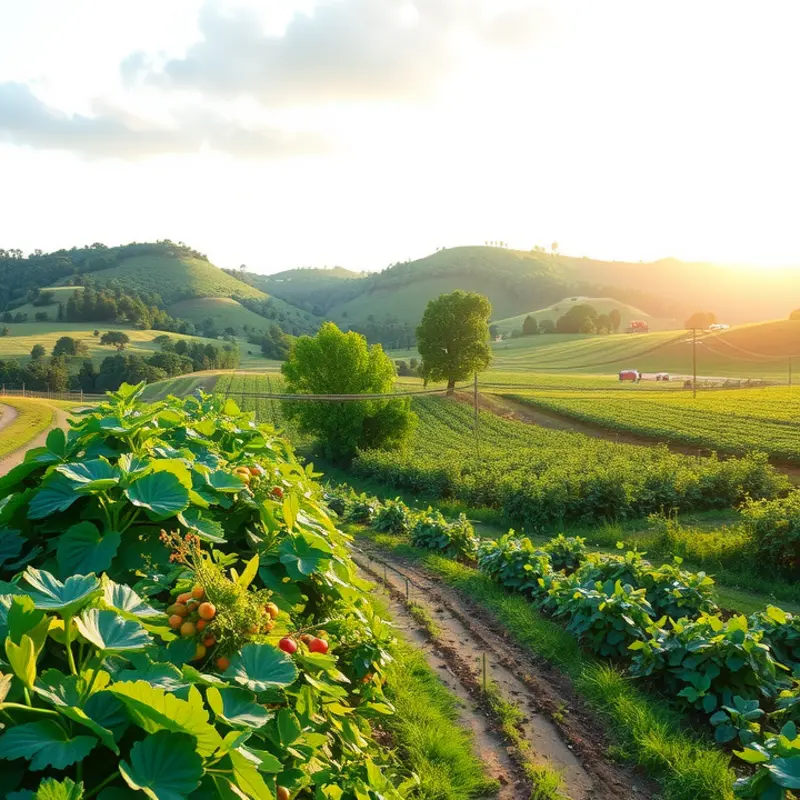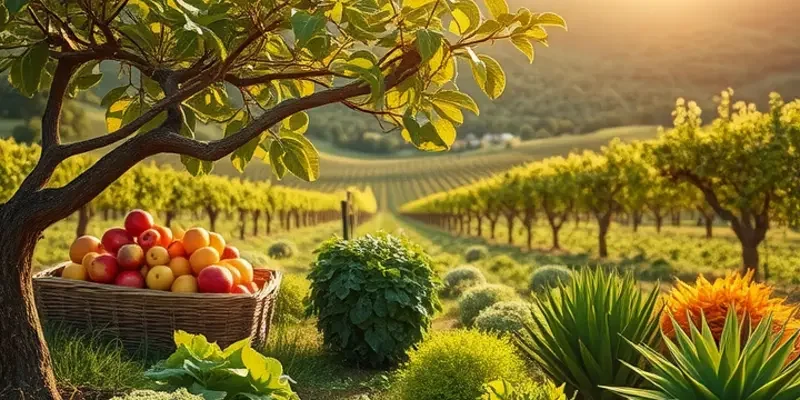Culinary traditions are as diverse as the landscapes they come from, especially among nomadic cultures. These communities have shaped their cuisines around movement, adapting to the rhythms of nature and the availability of resources. In this exploration, we’ll delve into unique nomadic cuisines that reflect the harmony between food and environment, celebrating flavors that tell the story of ancient practices, resilience, and innovation.
The Flavorful Journey of the Mongolian Nomads

In the vast steppes of Mongolia, the culinary traditions of nomadic cultures offer a distinctive tapestry of flavors and techniques. The Mongolian nomads have developed a cuisine that reflects their environment, lifestyle, and deep connection with nature. This chapter explores the ingredients and cooking methods that define this unique gastronomy.
At the heart of Mongolian nomadic cuisine is the reliance on livestock. Sheep, goats, and cows are not just sources of sustenance but central to the nomadic way of life. The meat from these animals is a staple, with mutton often taking center stage due to its rich flavor and availability. In a land where plant resources are scarce, meat becomes the primary ingredient, providing both nutrition and comfort against the harsh climate.
One of the most celebrated dishes is buuz, a type of dumpling that showcases the elegance of simple ingredients. Made from finely minced meat mixed with onions and sometimes garlic, these dumplings are encased in thin dough. They are typically steamed, which retains moisture and enhances the meat’s flavor. Buuz is more than a dish; it is a cultural emblem, often prepared in large quantities for festivals and family gatherings.
Another iconic dish is khorkhog, which is distinctly Mongolian in its preparation. Khorkhog involves cooking mutton alongside vegetables such as carrots and potatoes using heated stones in a sealed container. This method creates a stew-like dish where the meat becomes intensely tender, infused with the smoky aroma of the stones. The traditional cooking process of khorkhog gives the dish a distinctive flavor that embodies the resourcefulness and intimacy of nomadic cooking.
Foraging also plays a role in Mongolian cuisine. Despite the rugged terrain, various edible plants, berries, and herbs are gathered to enhance meals. These ingredients add layers of flavor and nutrition, offering a counterbalance to the predominant use of meat.
The influence of traditional practices on contemporary tastes is evident. While modern Mongolian kitchens may incorporate outside influences, the authenticity of ancestral recipes prevails. The art of preserving food with natural methods, such as air-drying or fermenting dairy into curds, continues to sustain the nomadic spirit.
In the context of sustainability, the Mongolian approach can offer valuable insights. Practices like using every part of the animal and avoiding food wastage align with eco-smart kitchen storage, reducing environmental impact in both ancient and modern times.
Overall, the culinary traditions of Mongolian nomads are deeply intertwined with their history and environment. The use of limited resources speaks to their resilience and creativity in the kitchen. This exploration of Mongolian dishes affirms the nomadic legacy where every meal is a celebration of survival and heritage.
Tastes of the Sami: A Culinary Heritage

Gáhkku, a flatbread unique to the Sami people, embodies the frugal yet resourceful nature of their culinary tradition. Made with ingredients like water, flour, and a hint of yeast, this bread is a staple in Sami households. It partners perfectly with bidos, a flavorful stew made from reindeer meat. Reindeer, central to Sami culture, provides a sustainable source of protein while reflecting their deep connection to the Arctic environment.
The art of Sami cooking extends beyond these popular dishes. Foraging for wild herbs and berries is an essential practice that highlights their symbiotic relationship with nature. Cloudberries, lingonberries, and crowberries, rich in antioxidants, are often collected during the short summer months. These berries not only add a tart contrast to savory dishes but also preserve a piece of the Sami landscape in every bite. The berries can be stored and enjoyed year-round, preserving the flavors of summer even in the heart of winter.
Fishing in the numerous lakes and streams of their homeland, the Sami people take a sustainable approach to angling. Traditional methods ensure that only what is needed is taken, preserving fish populations for future generations. The catch might include Arctic char or salmon, often smoked or grilled to retain its natural flavors. Smoking fish is a technique that infuses a distinct, earthy aroma, a perfect representation of the rugged terrain it comes from.
The Sami’s relationship with food transcends sustenance, embracing principles of mindfulness and respect for the land. It’s a harmony akin to concepts found in addressing unconscious eating, though rooted in traditions passed through generations. Every meal is a reminder of their reliance on nature, and every dish tells the story of their nomadic journey.
Preparation of Sami meals often involves processes that enhance natural flavors without overwhelming them. Preserving these raw flavors is as much about tradition as it is about sustainability, allowing them to utilize all parts of their harvests while minimizing waste. In a harsh climate where resources must be judiciously managed, waste reduction is both practical and necessary, a practice mirrored in their culinary cycles.
As the Sami continue to adapt their dietary practices to the changing world, they persevere in preserving a culinary heritage that’s profoundly tied to the Arctic. Though their methods may evolve, the essence of Sami food remains unchanged. It’s a testament to their resilience and ingenuity, a glimpse into a lifestyle where each meal is crafted with care, intention, and respect for the world around them.
Final words
Nomadic cuisines offer a fascinating glimpse into the rich tapestry of human culture, blending sustainability, tradition, and adaptability. By embracing the diverse flavors and methods that characterize the culinary practices of nomadic communities, food enthusiasts and culturally-curious individuals can appreciate how food nurtures both individuals and communities. Exploring these traditions invites us to discover not just new flavors, but also a deeper understanding of the intricate relationship between people and their environments.








